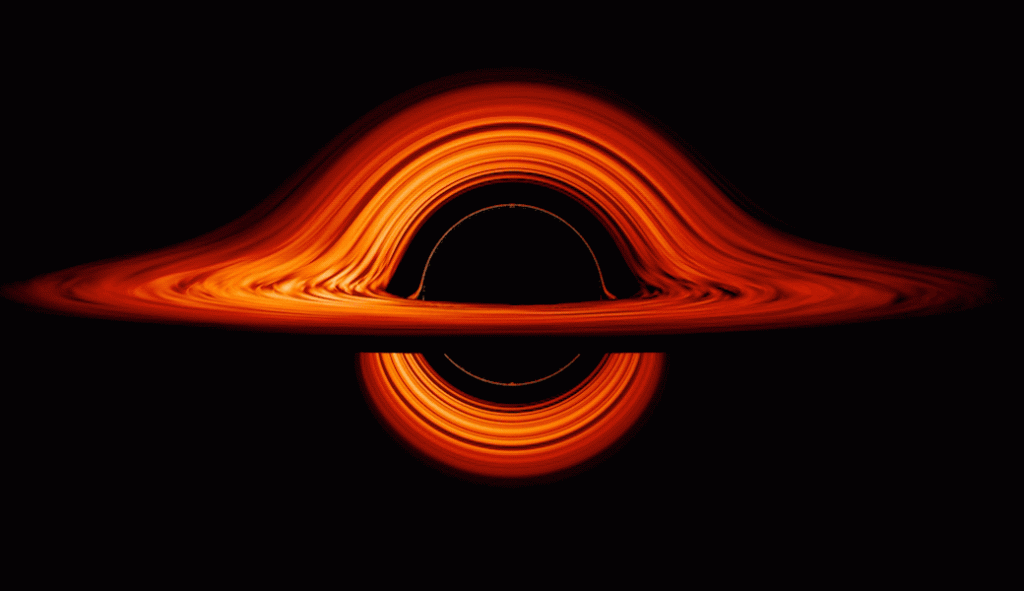
Scientists just grew a black hole disk in a lab to better understand how they feed (Image Credit: Space.com)
Scientists have brought the immediate environment of a black hole down to Earth by creating a spinning disk of plasma in the lab.
This ring of superheated gas mimics the matter that whips around the edge of black holes in so-called “accretion disks” that gradually feed matter to black holes.
The experiment conducted by researchers at Imperial College London could help scientists answer the question of how black holes grow by consuming the matter that surrounds them.
“Understanding how accretion discs behave will not only help us reveal how black holes grow, but also how gas clouds collapse to form stars, and even how we might be able to better create our own stars by understanding the stability of plasmas in fusion experiments,” Vicente Valenzuela Villaseca, research lead author and Princeton University post-doctoral researcher said in a statement.
Related: Black holes of the universe (images)

Disks of plasma around black holes were immortalized when the Event Horizon Telescope (EHT) captured the first direct image of a black hole.
Predominant in this historic image of the supermassive black hole at the heart of the galaxy Messier 87 (M87) — and in a later image of the supermassive black hole in the Milky Way, Sagittarius A* (Sgr A*) — is a glowing orange ring of plasma surrounding the dark central black hole.
This ring occurs as matter is drawn to a black hole, and its immense gravitational influence creates turbulent and violent conditions, heating gas and stripping electrons away from its constituent atoms. This transforms the gas into plasma, a sea of electron-less atoms, or ions, and electrons. This plasma forms an accretion disk held steady by the outward push of centrifugal force generated by its rotation and the inward force of gravity.
This stability is occasionally interrupted, causing material from the disk to fall to the surface of the black hole, but scientists are exactly sure how instabilities arise. This is important to our understanding of black holes as they can’t grow without some material being accreted.
Scientists can hardly recreate a black hole like that of M87, which has a mass 4.5 billion times that of the sun. That means the next best thing they can do in order to study the environments of these cosmic titans up close and personal is to recreate the plasma that whips around them.
The team used the Mega Ampere Generator for Plasma Implosion Experiments machine (MAGPIE) to spin plasma and create an accurate replication of accretion disks. This required accelerating eight jets of plasma and colliding them to make a spinning column. The team found that the plasma was moving more rapidly in the inner regions of the column, something that is believed to be an important characteristic of accretion disks.
Despite allowing for better modeling of accretion disks, the experiment is only a proof of concept, mainly because MAGPIE can only generate short plasma pulses, limiting the team’s observations to no more than one full rotation of the disk. Repeating the experiment with longer pulses of plasma should allow the team to characterize accretion disks better.
One of the suggested mechanisms that cause instabilities in these disks of plasma is magnetic fields giving rise to friction that causes a loss of energy in the matter that results in it accreting to the surface of the black holes. Longer plasma pulses in the lab would also allow for the introduction of magnetic fields to the system letting researchers test this mechanism.
“We are just at the start of being able to look at these accretion discs in whole new ways, which include our experiments and snapshots of black holes with the Event Horizon Telescope,” Valenzuela-Villaseca said. “These will allow us to test our theories and see if they match astronomical observations.”
The team’s research was published in the journal Physical Review Letters.
Follow us on Twitter @Spacedotcom or on Facebook.





